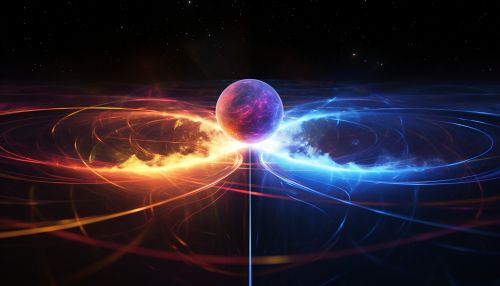Quantum Communication with Continuous Variables
Introduction
Quantum communication with continuous variables involves the use of quantum systems that have a continuous range of outcomes to transmit and process information. This field is a subset of quantum information science, which studies the application of quantum mechanics to information processing tasks.


Quantum Systems with Continuous Variables
In quantum mechanics, a continuous variable system is one where the observables can take a continuous range of values. This is in contrast to discrete variable systems, where the observables can only take certain specific values. Examples of continuous variable systems include the position and momentum of a particle, and the field quadratures of a light field.
Continuous variable systems are often used in quantum information science due to their compatibility with many existing communication infrastructures, such as optical fiber networks. They also allow for the implementation of various quantum information protocols, such as quantum key distribution, quantum teleportation, and quantum computing.
Quantum Communication
Quantum communication is a method of transmitting information that utilizes the principles of quantum mechanics. This includes phenomena such as quantum superposition and quantum entanglement, which allow for new modes of communication that are not possible with classical systems.
In quantum communication with continuous variables, the information is typically encoded into the quantum states of light, such as the amplitude and phase quadratures of a coherent light field. These quantum states can then be manipulated and measured to perform various information processing tasks.
Quantum Key Distribution
One of the most well-known applications of quantum communication with continuous variables is quantum key distribution (QKD). QKD is a method of secure communication that uses quantum mechanics to ensure the secrecy of the communication. The security of QKD comes from the fundamental principles of quantum mechanics, such as the no-cloning theorem and the Heisenberg uncertainty principle.
In a typical QKD protocol, the sender (often referred to as Alice) prepares a sequence of quantum states and sends them to the receiver (often referred to as Bob). Bob then performs measurements on these states and communicates his measurement results to Alice. Using this information, Alice and Bob can generate a secret key that can be used for secure communication.
Quantum Teleportation
Quantum teleportation is another application of quantum communication with continuous variables. Quantum teleportation is a process where the state of a quantum system is transferred from one location to another, without the physical transmission of the system itself. This is achieved by utilizing quantum entanglement and classical communication.
In a quantum teleportation protocol, Alice and Bob share an entangled pair of quantum systems. Alice performs a joint measurement on her part of the entangled pair and the system she wants to teleport. She then sends the results of this measurement to Bob through a classical communication channel. Bob uses this information to perform a unitary operation on his part of the entangled pair, which results in his system being in the same state as the original system Alice wanted to teleport.
Quantum Computing
Quantum computing is a field that aims to develop computers that use quantum bits, or qubits, to perform computations. Continuous variable systems can be used to implement qubits, with the quantum states of the system representing the 0 and 1 states of the qubit.
Quantum computers have the potential to solve certain problems much more efficiently than classical computers. This includes problems such as factoring large numbers, simulating quantum systems, and optimizing complex systems.
Conclusion
Quantum communication with continuous variables is a promising field that has the potential to revolutionize information processing. By utilizing the principles of quantum mechanics, it allows for new modes of communication and computation that are not possible with classical systems.
